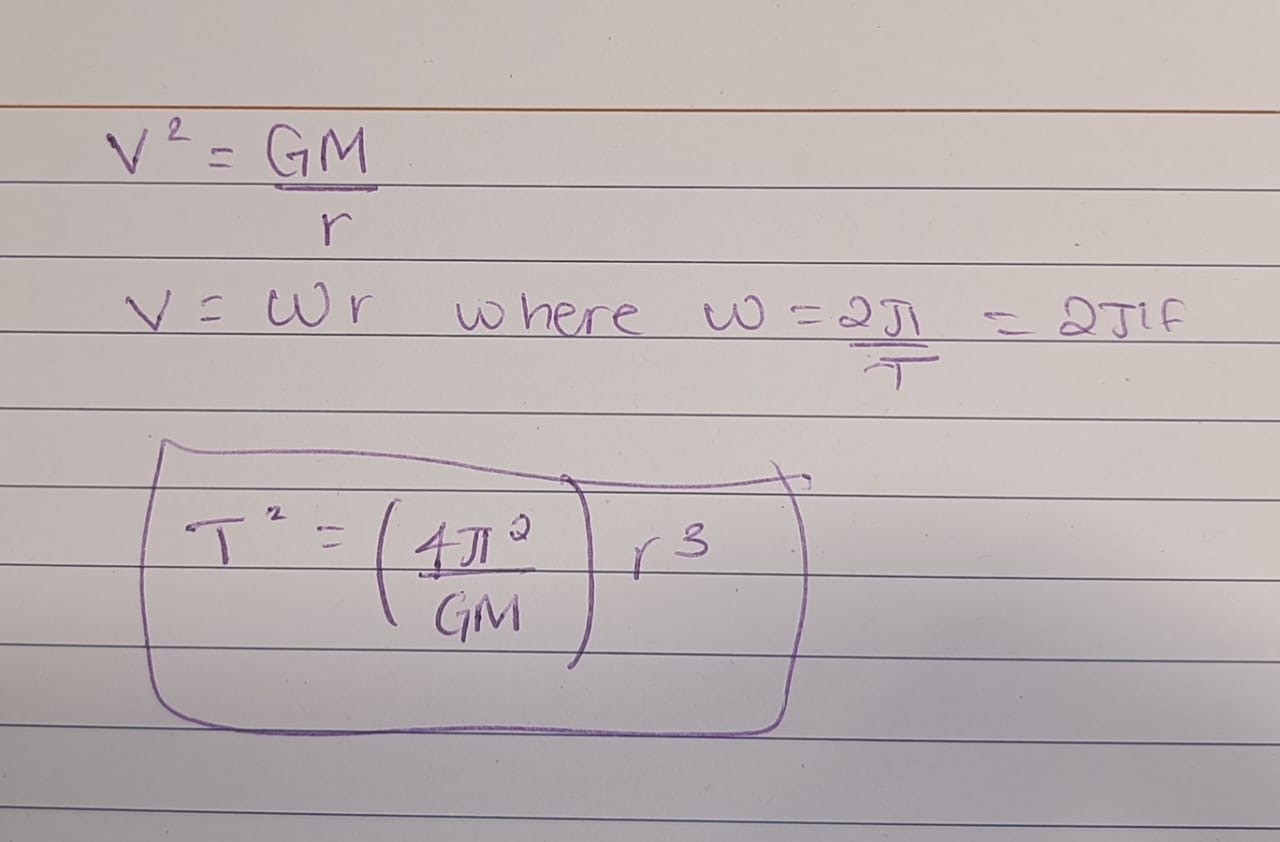Physics - Topic 13 ( Gravitational Field )
1/9
Earn XP
Description and Tags
(Gravitational Fields)
Name | Mastery | Learn | Test | Matching | Spaced |
|---|
No study sessions yet.
10 Terms
Gravitational Field
Is force per unit mass
Described by gravitational field lines
Higher density of lines = a region of stronger field
Point mass for a point outside a uniform sphere
The gravitational field behaves as if all the mass were concentrated at a single point at the center of the sphere
Newton’s Law of Gravitation
States that every mass attracts every other mass with a force proportional to the product of their masses and inversely proportional to the square of the distance between their centers.
F = GMm/r2, where G is the gravitational constant
Centripetal acceleration for orbiting satellite
V2= GM/r, where V is the orbital speed and r is the radius of the orbit. Velocity is independent of mass and depends on the radius of the orbit.
Orbiting Period


Geostationary Orbit
Remains above a certain point on the Earth and is always there only
Time period = 24 hrs
Orbital radius is a fixed value from the center of the Earth, orbiting from West to East Directly above the Equator
Gravitational Field Strength
Is the gravitational pull of an object due to the mass of the object in its field
Equate W = mg to Newton’s Law of Gravitation
mg = GMm / r2
g = GM / r2Gravitational Potential
At a point is work done per unit mass in bringing a unit test mass from infinity to a point
Gravitational Potential = -GM/r Reasons why the gravitational potential is negative
Force is always attractive
It increases from 0 to infinity
It decreases in the direction of field
Gravitational Potential Energy
Of a mass at a point in the gravitational field of another mass is work done in bringing that unit mass from infinity to that point
u= -GMm/r